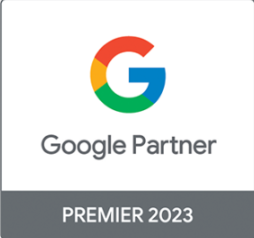Title tags and descriptions fundamentally influence your click-through rate from organic search (SEO). A perfect title and description can lead to an increase in clicks and engagement, but weak ones will get you unqualified leads and a high bounce rate.
Let’s explore how good SEO titles and meta descriptions are generated using SEO fundamentals such as user intent and on-page content.
What is a title tag in SEO?
A title tag can be known as a webpage element used to highlight the title of a particular page. This webpage element is hidden in HTML (coding) but can be seen as a snippet in search engine results pages (SERPs) to give users an idea of what the name/title of the page is.
Title in SERPs:
Title in HTML:
<title> Create good titles and snippets in Search results – Search Central </title>
What is a meta description in SEO?
A meta description is a webpage element that provides a short description of what the webpage is about. This description can be found in the backend of the page in HTML coding but can be seen as a snippet in SERPs.
This description is used by Google and users to get a sense or understanding of what the page is about and SEO specialists take this as an avenue to entice users to click on that listing in search results based on their keyword intent, description, and call-to-action (CTAs).
Meta description in SERPs:
Meta description in SERPs:
<meta name=”description” content=”Shop for toiletries from well-known brands offering personal care and toiletry products. Shop toiletries for sale online.“>
How long are titles and descriptions in SEO?
Google recommends title tags that are at least 60-65 characters long and description tags 160-165 characters long to display fully on mobile devices, desktop, and tablet devices. This tends to change depending on users’ search queries and intent.
Google is notorious for displaying different results per user’s search queries and most importantly based on the on-page content of that page as it may provide a much better sense of relevance with regards to the page and query.
How to create good SEO titles and descriptions?
Winning SEO titles and descriptions are based on good old-fashioned SEO fundamentals called ‘user intent’ (purpose) and the content of the page.
How to generate a title and meta description tag with user intent in mind?
Crafting the perfect title and descriptions will need you to decide between 3 stages of the user/sales intent funnel, which is broken down into Awareness, Consideration and Transactional. These are used to identify the type of page and at what stage of the funnel is the user.
For example, a blog page is an Awareness page and will have content/keywords around awareness and educating the user. While a product page will be a Transactional page where the user is at purchasing stage and is ready to buy the product. Therefore, title tags and descriptions for these pages could be like this:
Stage: Awareness
Blog page title:
“What are the best soup recipes for winter?”
Blog page description:
“Get to learn all the best soup recipes for winter to keep you warm and cosy indoors. Learn more about winter soup recipes.”
Stage: Transactional/Conversion
Product page title:
“Shop Winter Soup Recipe Book”
Blog page description:
“Shop our winter soup recipe book for the best cold-weather recipes. Buy our winter soup recipe book online now!”
Top 3 things to avoid with titles and descriptions:
Here are some of the key elements to always avoid when creating unique meta titles and meta descriptions in SEO.
- Keyword stuffing: Keep it concise. Plugging unnecessary keywords won’t help you rank higher but instead will be seen as a page with low quality (spammy) to users and Google. A good title should have the main target keyword referenced once in a title tag and at least twice in the meta description.
- Weak CTAs and no CTAs: If you are working on an eCommerce site and 95% of your pages are a consideration (category/PLPs) and transactional pages (products), your call-to-action should be something like:
“Shop Affordable Men’s Golfers | Clothing Store” or
“Buy Men’s Golf T-Shirt Online | Clothing Store” and not
“Men’s Golfers | Clothing Store” or
“Browse Men’s Golfers | Clothing Store.
- Duplication: All webmasters create websites in a similar manner in which each type of page is created as a template and rolled out for the entire site. Therefore, creating a website that is built on the same page layout and in most cases the same metadata. This is mostly seen on eCommerce sites or sites that use plugins like SEO Yoast for meta-automation. This should be avoided at all costs as it defeats the purpose of having unique titles and descriptions.
Improve Your Meta Titles And And Descriptions According To Best SEO Practices
Titles and descriptions are called metadata and are part of a rich snippet that shows on search engine results pages that describe what the page is about. These tags can be used as an avenue to lure users to your site using user intent, good keyword targeting and CTAs.
A combination of all these SEO metadata tips can be a winning formula to increasing click-through rate in SERPs as users will be able to find what they are looking for and also click on your website because the content and description are aligned.
If you are keen on getting the best unique titles and descriptions on your website that could be using a CMS platform like as Magento, WordPress, Shopify, Drupal, or something else, don’t hesitate to give us a call.
Author : Solomon Tshielo



